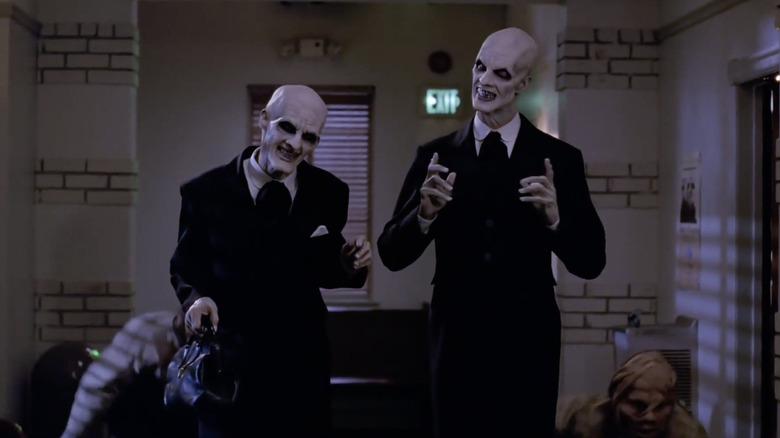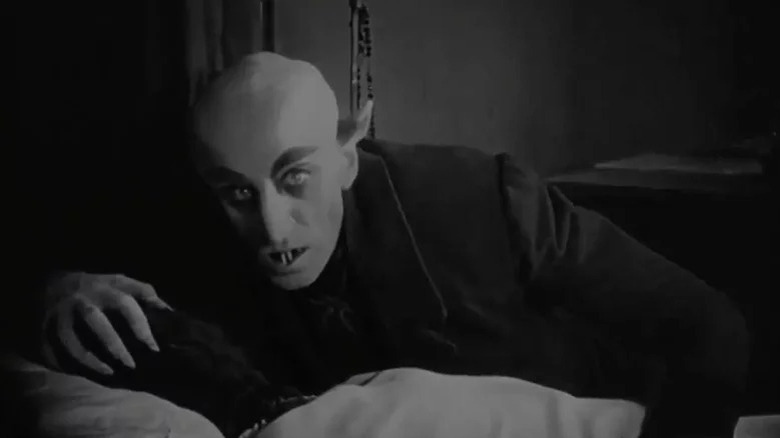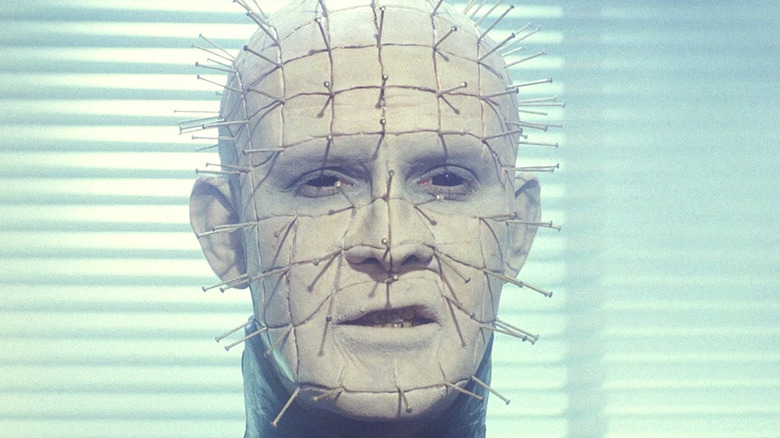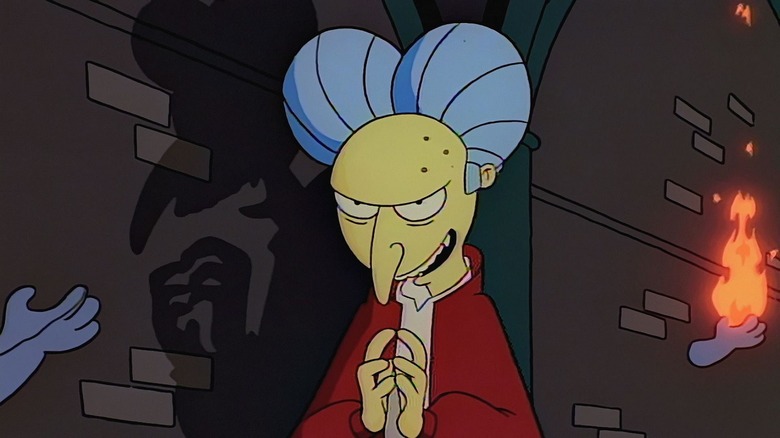Buffy The Vampire Slayer's Scariest Episode Was Inspired By Two Horror Classics And A Simpsons Villain
"Buffy The Vampire Slayer" season 4 is one of the show's more contested runs, but episode 10, "Hush," is a fan-favorite. When silent, grinning demons called the Gentlemen come to Sunnydale and rob the characters of their voices, the series makes a rare turn into outright horror.
Series creator (and controversial figure) Joss Whedon, who personally wrote and directed "Hush," recounted in the episode's DVD commentary that he wanted to test himself as a visual storyteller. He felt the visuals in "Buffy" had become too functional; the dialogue was guiding the storytelling to simple shot/reverse shot techniques. The obvious way to break up this monotony was to make an episode with little dialogue.
"Hush" forces the characters to find new ways of communicating and the story to deliver information without language. Looking at his career wholistically, Whedon never really outgrew using his dialogue as a crutch, but even he acknowledges: "It is great when you have something that is visceral and visual and cinematic and not just 'people are yakking.'"
Whedon's hands-on approach to "Hush" extended to designing the villains. He wanted them to feel "Victorian," hence their suits and creepy politeness. When it came to their particular design, Whedon cited three inspirations to make-up artist John Vulich: "Nosferatu, Pinhead, [and] Mr. Burns."
Nosferatu
"Nosferatu," directed by F.W. Murnau and first released in 1922, was one of the first vampire films. "Nosferatu" was also a silent film, so the allusion is a fitting one for "Hush."
Despite the title, the vampire in "Nosferatu" is actually called Count Orlok (Max Schreck), a thinly veiled depiction of Dracula renamed to (unsuccessfully) avoid a lawsuit from the Bram Stoker estate. Orlok was bald, with pointed ears, claw-like fingernails, and implicitly pale skin (to see how the vampire would look in color, check out Werner Herzog's 1973 "Nosferatu" remake starring Klaus Kinski). "Buffy" had already aped Orlok's general look for season 1 Big Bad, The Master (Mark Metcalf), so the show returning to this well wasn't surprising. The Gentlemen lack Orlok's elfen ears and they smile instead of frowning, but they share his thick black eyebrows and pointed teeth. There's also the matter of how they move.
One of the most famously creepy shots in "Nosferatu" is the vampire walking upstairs, shown only in shadow with an outstretched claw. The mood of that shot is mirrored midway through "Hush," with a prolonged sequence of the Gentlemen floating through the streets of Sunnydale, the only sound being Christophe Beck's eerie score. Olivia (Phina Oruche) glimpses one of them through the window, before a jump scare of another passing right by. The sequence then cuts to a close-up of a Gentleman's hand curled in a claw shape — Whedon recounts that he directed actor Don Lewis to "Give me Nosferatu on the hand."
Pinhead
Pinhead is a native of Clive Barker's "Hellraiser" franchise. Played first by Doug Bradley, Pinhead is the leader of the Cenobites, a group of former humans turned into extradimensional sadomasochistic demons. Pinhead, true to his name, has dozens of nails lodged into his pale, bald skin. Creepily enough, he's probably one of the least modified Cenobites.
The Gentlemen's faces bear a passing resemblance to Pinhead's, though minus the pins. The demons working in a group also call to mind the Cenobites. However, the Cenobites' outfits are black leather with plenty of skin windows (another part of the BDSM motif). This is worlds away from the Gentlemen's far more presentable outfits.
What the two groups do have in common is their sadism. For some nebulous reason, the Gentlemen collect seven human hearts from every town they visit. The reason they steal people's voices is because the sound is fatal to them and their work means their prey will definitely make a lot of noise. Halfway through "Hush," there's a gruesome scene of two Gentlemen removing a young man's heart. Is the removal done with a magical spell? Nope, they do it the slow way with a scalpel.
Mr. Burns
"The Simpsons" was at its cultural height in the 1990s; "Buffy" debuted towards the end of the cartoon's "Golden Age" in 1997. One of the most famous "Simpsons" characters not part of the eponymous family is Mr. Charles Montgomery Burns, Homer's boss and the series default villain. A decrepit and miserly tyrant, Burns embodies the evil of corporate wealth, like Ebenezer Scrooge without a change of heart.
Burns has a vulture-like appearance, from his balding head to his thin-beaky nose. Since they aren't animated, the Gentlemen naturally aren't as caricatured as Burns, but they share his menacing grin and thin frame. While his soul is absolutely black, Burns isn't literally demonic like the Gentlemen — usually. In the "Treehouse of Horror IV" segment "Bart Simpson's Dracula," Burns plays the part of the vampire. His upper jaw now bares fangs while he dresses up like Gary Oldman's Count from Francis Ford Coppola's "Dracula."
If there's an iteration of Mr. Burns who most resembles the Gentlemen, it's definitely the Dracula one. That said, the Gentlemen lack Burns' most distinctive trait: his low, sinister, Mid-Atlantic voice (provided by Harry Shearer). A silent villain isn't necessarily scarier than a voiced one, or vice versa. It's all about the execution.



